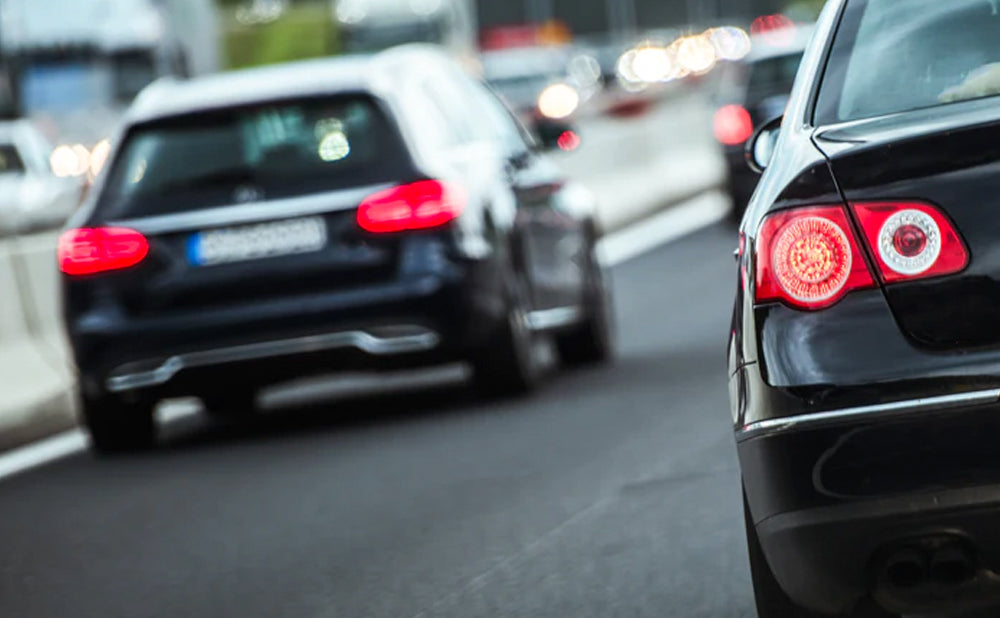How to drive in Germany?

Basic rules of the roads and driving requirements.
GENERAL TIPS AND ROAD INFORMATION
Traffic drives on the right and passes on the left
MOTORWAYS
German roads are fast and well maintained. Notoriously, German motorways (the Autobahn) are free of speed limits in certain areas. Where speed limits exist they are generally strongly enforced and you are advised to respect them. Driving in German residential areas. When driving in residential areas, be aware that traffic 'calming zones' are usually in effect. This means pedestrians may use the entire street, and children are allowed to play in the street, so proceed with extreme caution.
TRAMS
Trams are given priority at all times. You are permitted to overtake trams on either side on one-way streets, however on a two-way street, it must be overtaken on the right. You must avoid overtaking trams when their occupants are either boarding or deboarding.

RIGHT OF WAY
Germany uses a hierarchical system to determine right-of-way at intersections.
A police officer directing traffic overrides all other traffic rules, traffic signs are the next highest, and most common right-of-way.
If there is no policeman, no signal, or no sign indicating the right-of-way, the following default scheme is used:
- Traffic on public highways has priority over private roads, forest and farm paths, and dirt roads.
- When two public roads cross at an uncontrolled intersection, right-of-way is always given to traffic approaching from the right.
- Whenever traffic is heavily congested, the "zipper rule" goes into effect. This means that cars feed one at a time alternating from each direction, regardless of who has the posted right-of-way.
PARKING
You either need to purchase a blue parking disc from a local shop or service station, or purchase a parking (pay and display) ticket from parking meters wherever available. Washing the car on the public roadway is illegal.

FINES
Police officers may collect fines for traffic offenses on the spot. If you don't have enough cash, your vehicle may be impounded (additional cost to you). You will be given a receipt for the payment. Beware of enforcement cameras. Germany uses surveillance cameras more than any other country. Cameras are stationed to catch speeders, red-light violators, and tail-gaters. Use of mobile phones is prohibited while your vehicle is in operation. The penalties for driving under the influence in Germany are harsh. Severe penalties are assessed to first-time offenders, usually including the suspension of their license. Penalties for drunk driving now start with a blood alcohol limit as low as 0.03.
FUEL
All grades of unleaded petrol, diesel and LPG are available as well as lead substitute additive. It is allowed to carry petrol in a can. Credit and debit cards are widely accepted, although they probably won't work at automatic pumps, which are often the only pumps open after-hours.
SPEED LIMITS
Speed limits in Germany are measured in KPH (Kilometres per Hour). You must check the road signs, although there are a set of general speed limits you must obey:
Motorways: None, unless indicated
Urban Roads: 100 kph
Divided Highways: 130 kph
Suburbs: 80-105 kph
Inner city: 50 kph
TOLLS
Germany does not have road tolls, it is the only large country in continental Europe that allows toll free driving.
DRIVING REQUIREMENTS
The minimum age to drive in Germany is 18.
DRIVER'S LICENSE
A national driver's license or an International Driver's Licence are acceptable for tourists in Germany. Anyone who is establishing residency in Germany, their driver's license or IDL are valid for six months from the date permanent residency is established, which is generally assumed to be the date you enter the country.
INSURANCE
Drivers must have third-party liability insurance.
CAR REQUIREMENTS
Vehicles must be equipped with a warning triangle and a highway first-aid kit. A fire extinguisher is not required by the law, but is recommended.
SEAT BELTS
Seat belts must be worn by all passengers.
Headlights
Headlights are mandatory day and night. In inclement weather low-beam headlights are required.
CHILDREN
Children under 12 years old or under 1.5 meters may not sit in the front seat unless traveling in an approved child safety seat. However, you may not use a child safety seat in the front seat if there is an active airbag. You must leave your doors unlocked while driving to facilitate rescue in an accident.
MOTORCYCLES
Headlights are required at all times.
USEFUL TELEPHONE NUMBERS
Police 112Fire 112
Ambulance 112
Sources: Getting around Germany / Muenchen.de / Drive Alive / DrivingAbroad / Wikipedia
